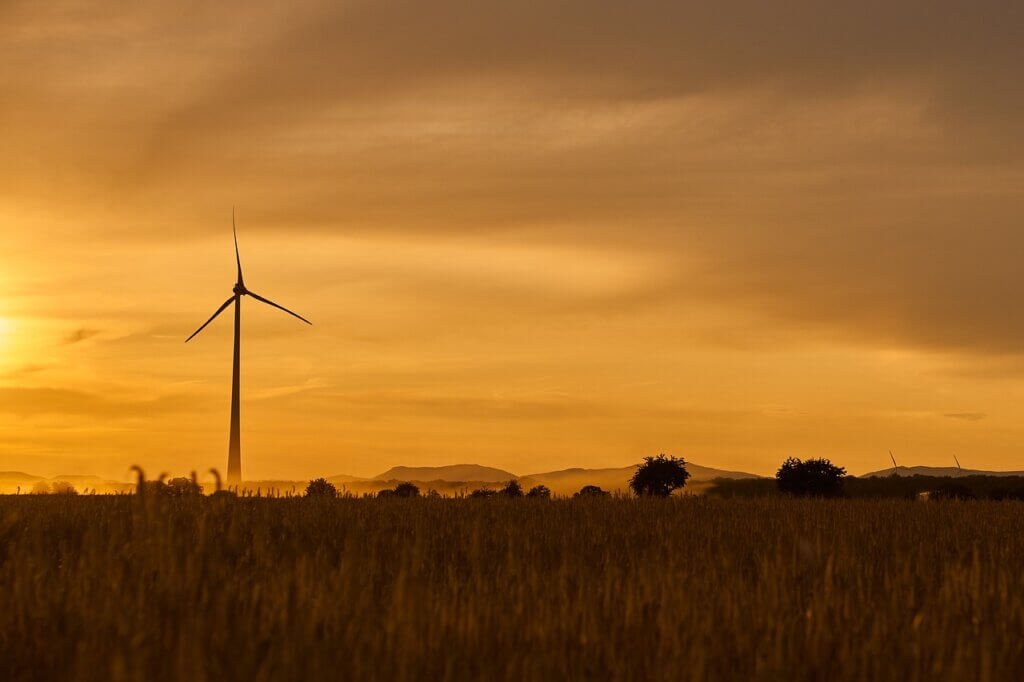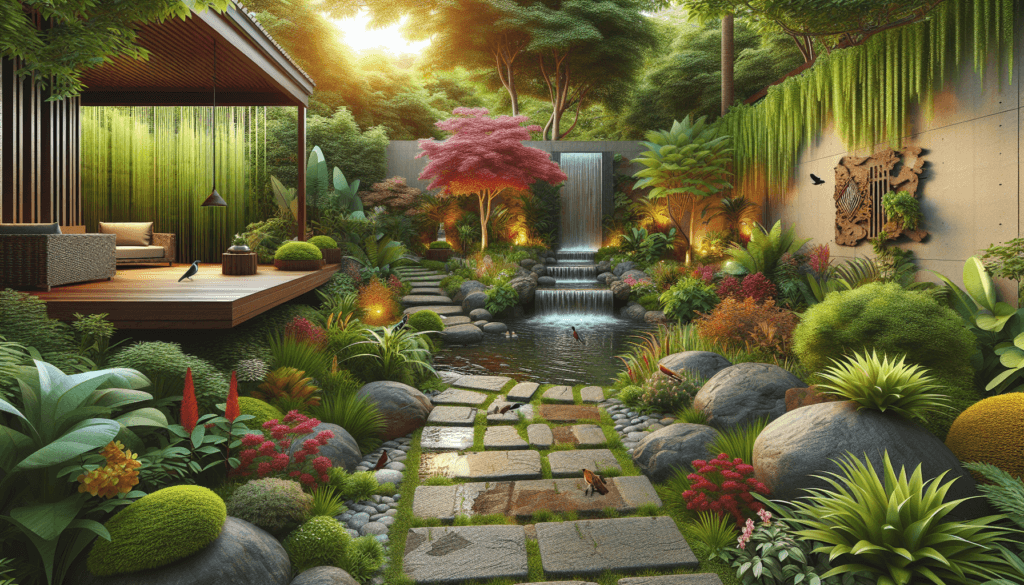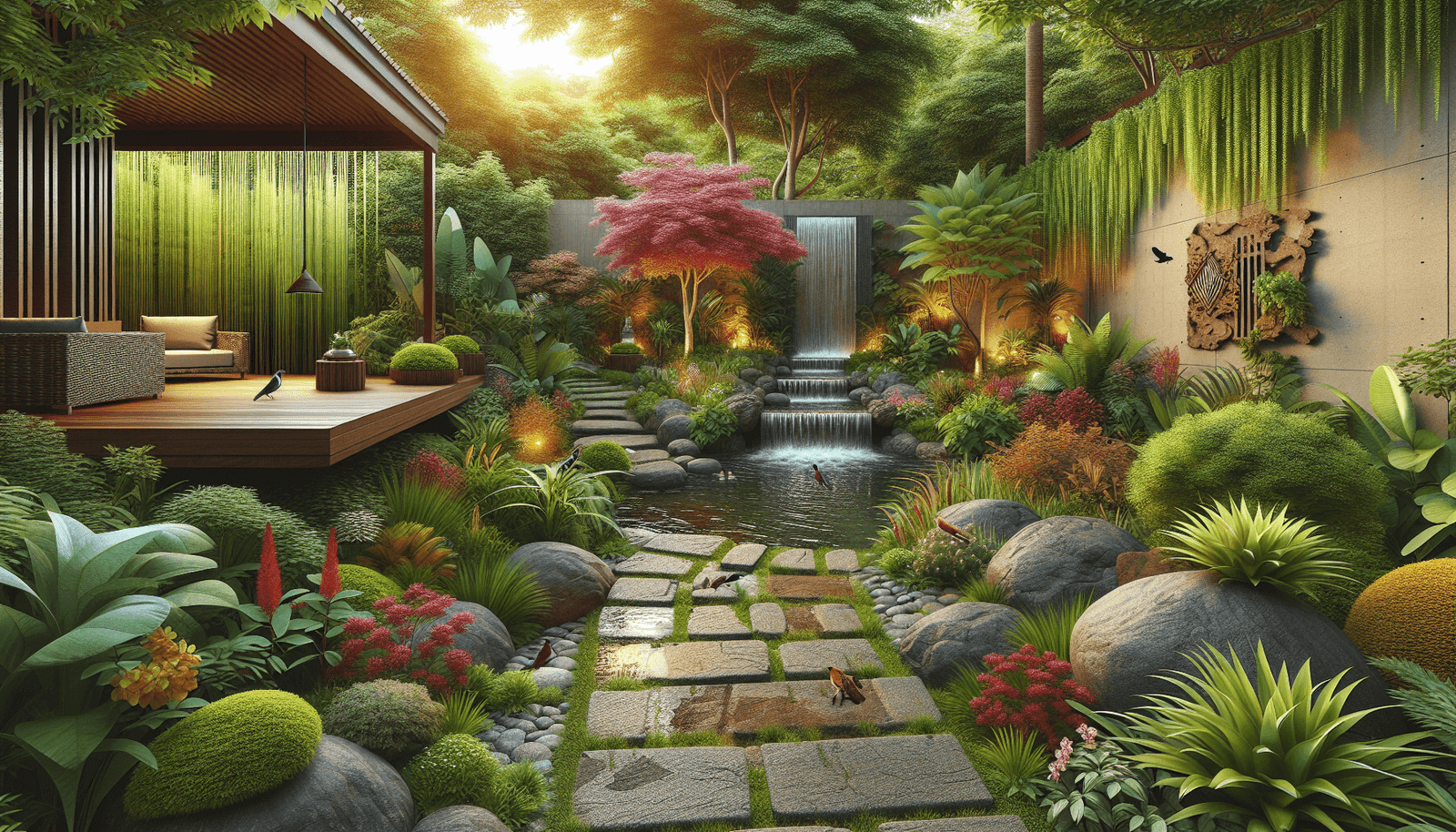Imagine transforming your garden into a serene oasis, complete with a stunning water feature that not only adds beauty but also helps the environment. In this article, you will discover the top 10 eco-friendly ways to design a water feature for your garden. From incorporating native plants to using solar-powered pumps, these creative ideas will not only enhance the aesthetics of your outdoor space but also contribute to a more sustainable ecosystem. Get ready to bring tranquility, sustainability, and charm to your garden with these eco-conscious water feature designs.

Choosing the Right Location
When designing a water feature for your garden, one of the key considerations is the location. The first aspect to think about is the amount of sunlight in the area. Most water plants and aquatic life require at least six hours of direct sunlight per day. Find a spot in your garden that receives ample sunlight to ensure the health and growth of your water feature.
Another important factor to evaluate is the soil type in the chosen location. The soil should have good moisture retention capabilities to support the water feature. Sandy or loamy soil is preferable, as it allows water to drain adequately without becoming waterlogged. Avoid areas with heavy clay soil, as it can become compacted and hinder water circulation.
Lastly, assess the proximity of the chosen location to existing trees and plants. Large trees can shed leaves and debris into the water feature, requiring frequent cleaning and maintenance. Additionally, the shade from trees can limit sunlight exposure to the water, negatively impacting the aquatic life. Choose a location that is away from trees or consider using a net to protect the water feature from falling leaves.
Using Recycled Materials
Incorporating recycled materials in your water feature design not only promotes sustainability but also adds a unique and aesthetic element. One way to repurpose old containers is by transforming them into small ponds or water features. Old barrels, bathtubs, or ceramic pots can be used to create stunning water features while reducing waste.
Reclaimed wood is another excellent choice for an eco-friendly water feature. An old wooden barrel or even driftwood can be transformed into a beautiful fountain or waterfall. The natural weathered look of reclaimed wood adds a rustic charm to the overall design.
Similarly, salvaged stone can be utilized to build an eco-friendly water feature. Stones gathered from construction sites or old structures can be arranged to create a natural-looking stream or pond. Not only does this reduce waste, but it also provides a visually appealing and environmentally conscious result.

Opting for Native Plants
Choosing native plants for your water feature promotes a sustainable ecosystem and ensures the survival of plant life and wildlife in your area. Native plants are well-adapted to the local climate, making them more resilient to weather fluctuations and diseases. Additionally, they require less water and maintenance compared to non-native species.
Select plants that are native to your region and suitable for water environments. Water lilies, iris, and cattails are popular choices for ponds, while water hyacinth and water lettuce are ideal for floating planters. By using a variety of native plants, you can create a biodiverse ecosystem that supports local wildlife, such as frogs and dragonflies, while enhancing the natural beauty of your water feature.
Implementing Water-Saving Techniques
Conserving water is crucial for an eco-friendly water feature. One way to achieve this is by installing a rainwater harvesting system. This system collects rainwater from your roof or gutters and stores it for later use in your water feature. Not only does it save water, but it also reduces the strain on local water supplies.
Utilizing drip irrigation is another water-saving technique. This method delivers water directly to the plant’s roots, minimizing evaporation and runoff. Grouping plants with similar water needs together can also ensure efficient water usage, as plants with different water requirements may result in wasted water.

Promoting Natural Filtration
Maintaining clean and clear water in your water feature is essential for the health of the plants and fish. Promoting natural filtration methods can reduce the need for chemical treatments and artificial filters.
Integrating a bog or wetland area into your water feature helps naturally filter the water. Bogs are planted with specific grasses and plants that absorb excess nutrients and purify the water. This natural filtering process helps maintain water clarity while providing a habitat for beneficial bacteria and insects.
Using gravel or pebbles as a filter is another effective method. Water passes through the porous surfaces, trapping debris and impurities along the way. This DIY filtration system can be easily incorporated into the design of your water feature.
Aquatic plants also play a crucial role in natural filtration. Plants such as water hyacinth and water lettuce absorb excess nutrients from the water, preventing algae growth and maintaining water quality. Including a variety of aquatic plants in your water feature not only enhances its visual appeal but also improves its overall health.
Choosing the Right Water Pump
Selecting the right water pump for your water feature is vital to ensure proper circulation and functionality. Energy-efficient pumps are an eco-friendly choice as they consume less electricity while still providing sufficient water flow. Look for pumps with high energy efficiency ratings and adjustable flow settings to optimize water circulation.
Consider solar-powered options for your water feature. Solar pumps harness energy from the sun, reducing electricity consumption and minimizing carbon footprint. These pumps are an excellent choice for eco-conscious gardeners who want to minimize their environmental impact.
Choosing the appropriate pump size is also essential. The pump needs to match the size of your water feature and the desired water flow. A pump that is too small will not provide adequate circulation, while a pump that is too large may lead to excessive energy consumption. Determine the dimensions of your water feature and consult with a professional or research online to select the right pump size.

Minimizing Chemical Usage
When it comes to maintaining the water quality in your water feature, it’s best to avoid chemical-based water treatments. Chemicals can be harmful to the environment, aquatic life, and beneficial bacteria. Fortunately, there are natural alternatives that can help keep your water feature clean and balanced.
Barley straw is a popular natural solution for algae control. When decomposed in water, barley straw releases compounds that inhibit the growth of algae. This natural treatment is safe for fish and other aquatic life, making it an environmentally friendly choice.
Maintaining water balance naturally is another effective way to minimize chemical usage. Regularly testing the pH, ammonia, nitrate, and nitrite levels in your water feature is essential. Adjusting the water chemistry using natural methods, such as adding limestone or crushed coral for pH adjustment, helps create a healthy environment for your water feature.
Adding Fish to the Water Feature
Introducing fish to your water feature can enhance its beauty and create a vibrant ecosystem. It’s important to choose fish species that are suitable for your climate and the size of your water feature. Research fish types that can thrive in your specific conditions, taking into account factors such as water temperature, oxygen levels, and compatibility with other aquatic life.
Creating a balanced ecosystem for the fish is crucial for their survival. Provide ample hiding places, such as rocks or plants, that allow them to seek shelter and protection. Additionally, ensure a proper food source is available for the fish, either through natural food production, such as algae growth, or supplementary feeding.
Maintaining proper water conditions is essential when keeping fish in your water feature. Regularly test water parameters for temperature, pH, ammonia, nitrite, and nitrate levels and make adjustments as necessary. Proper filtration, aeration, and regular water changes are important for maintaining the health and well-being of your fish.

Emphasizing Aesthetic Design
While eco-friendliness is crucial, aesthetics also play a significant role in designing a water feature. Incorporating natural stones and rocks into the design adds a natural and organic feel. Position large rocks strategically to create cascades or waterfalls, and use smaller stones or pebbles to create pathways or decorative accents.
Creating varying levels and depths in your water feature adds visual interest and mimics natural water formations. Combine shallow areas with deeper sections to provide habitat diversity and accommodate different aquatic plants and animals. Incorporate steps or platforms to create different height levels and make the water feature visually appealing.
Consider adding decorative elements to enhance the overall design. Features such as floating plants, water fountains, or ornamental sculptures can create focal points and add interest to the water feature. Choose elements that complement the natural environment and blend harmoniously with the surrounding landscape.
Ensuring Proper Maintenance
Proper maintenance is crucial for ensuring the longevity and functionality of your water feature. Regularly clean the water feature by removing any debris or fallen leaves. This helps prevent clogging and maintains proper water flow. Use a net or skimmer to easily collect floating debris and leaves.
Check for leaks or stagnant water to prevent any issues that may arise. Inspect the water feature regularly for any signs of damage or leakage. Stagnant water can lead to poor water quality and the growth of harmful bacteria. Ensure proper water circulation and address any issues promptly to maintain a healthy and thriving water feature.
By following these top 10 eco-friendly ways to design a water feature for your garden, you can create a sustainable and visually appealing addition to your outdoor space. From choosing the right location to ensuring proper maintenance, each step contributes to promoting environmental consciousness while enjoying the benefits of a beautiful water feature.


